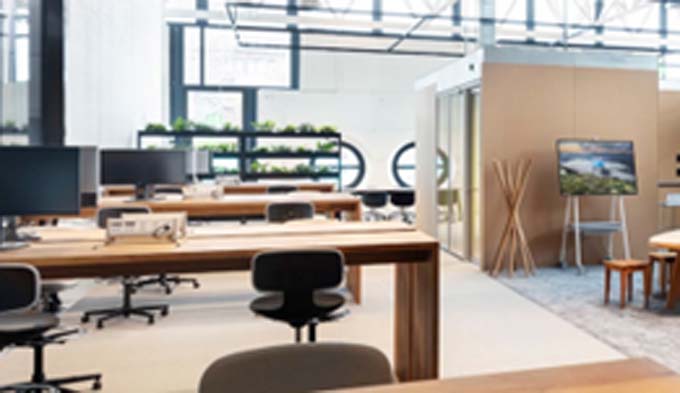How the office becomes a coworking space
Hybrid forms of work are likely to become the norm in many companies in the future. This changes the use of office space as well as the demands on the IT infrastructure. This article shows how technology can help companies design their own coworking spaces.

Opinions are currently divided on the question of whether employees should return to the office completely or be able to work at least part of their working hours independently of location. Those who opt for a mixed form should think about the design of the office space. If fewer employees work permanently in the company, fewer fixed or individual workstations are needed. In order to create the conditions for desk sharing, support is needed in the form of user-friendly and intelligent technologies.
Coworking in the company
If employees are free to choose their workplace within the company, cross-departmental exchange is encouraged - people are always sitting next to other colleagues. This breaks down silos and removes barriers between teams and work areas. In this way, office spaces become company-owned coworking spaces.
Halter, a leading Swiss company for construction and real estate services, has consistently taken the path to coworking space. When redesigning their office space, they focused on a flexible layout that invites collaboration. Modern IT equipment ensures that users can easily work wherever they want. With the redesign, Halter also eliminated an old problem: employees were using different technologies from different manufacturers, which made both flexible working and support difficult.
What distinguishes modern IT equipment
- Vendor-independent connectivity offers flexibility. Those who rely on universal connection types like Thunderbolt or USB-C enable users to connect their laptops easily.
- Broad range of clients from a single source simplifies procurement. Employees have different requirements for their devices depending on their job. The provider should be able to cover these with a broad portfolio. To ensure that the specification for each individual employee does not become too complex, it helps to divide them into a limited number of user types, known as personas.
- Custom configuration enables immediate use. Instead of the time-consuming process of setting up each individual device via the company's own IT department, clients can now be delivered pre-configured ex works. If desired, they can be delivered with everything - from applications to settings to company contacts - directly to employees, no matter where they are located.
- Save time with centralized IT management and updates. Centralized solutions focused on simplifying the PC lifecycle environment help save costs and time. They make it possible to automate the setup, configuration, monitoring and updating of client device images.
Source: www.delltechnologies.com









